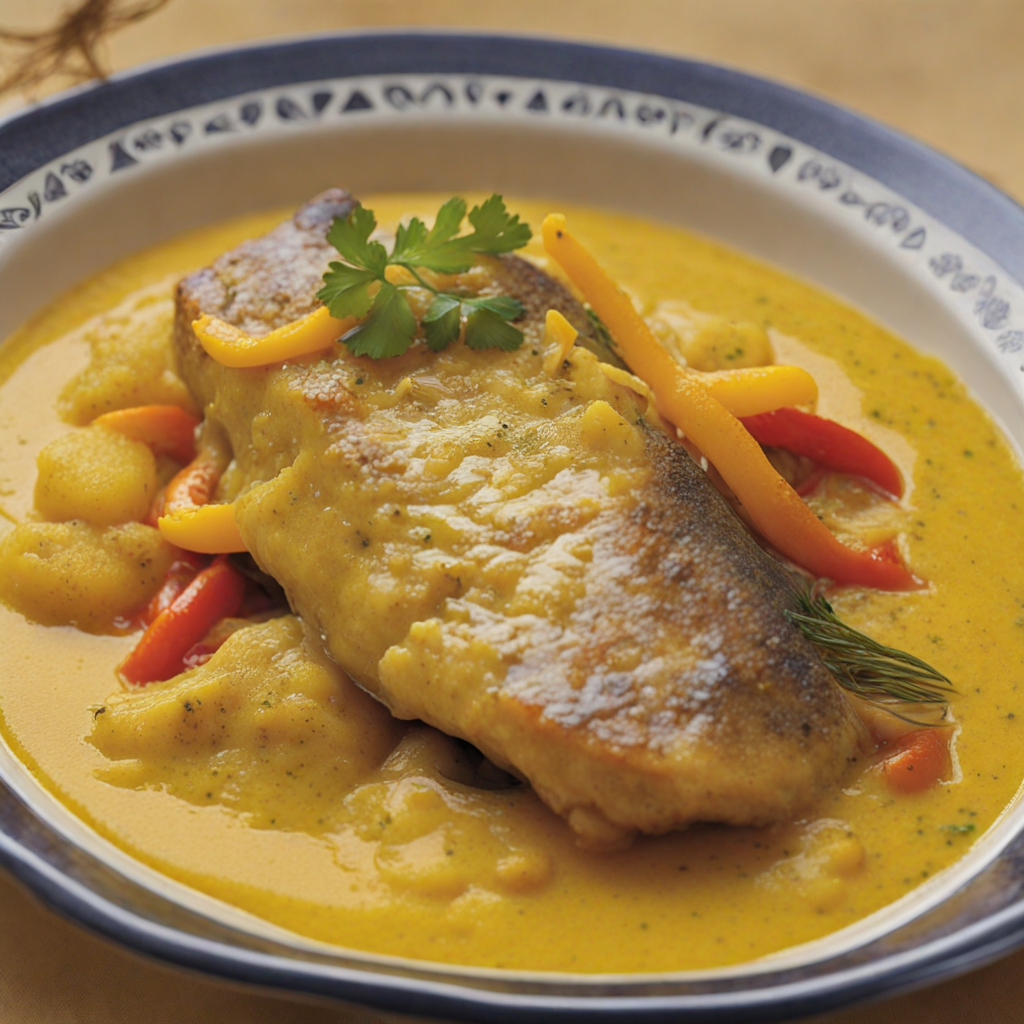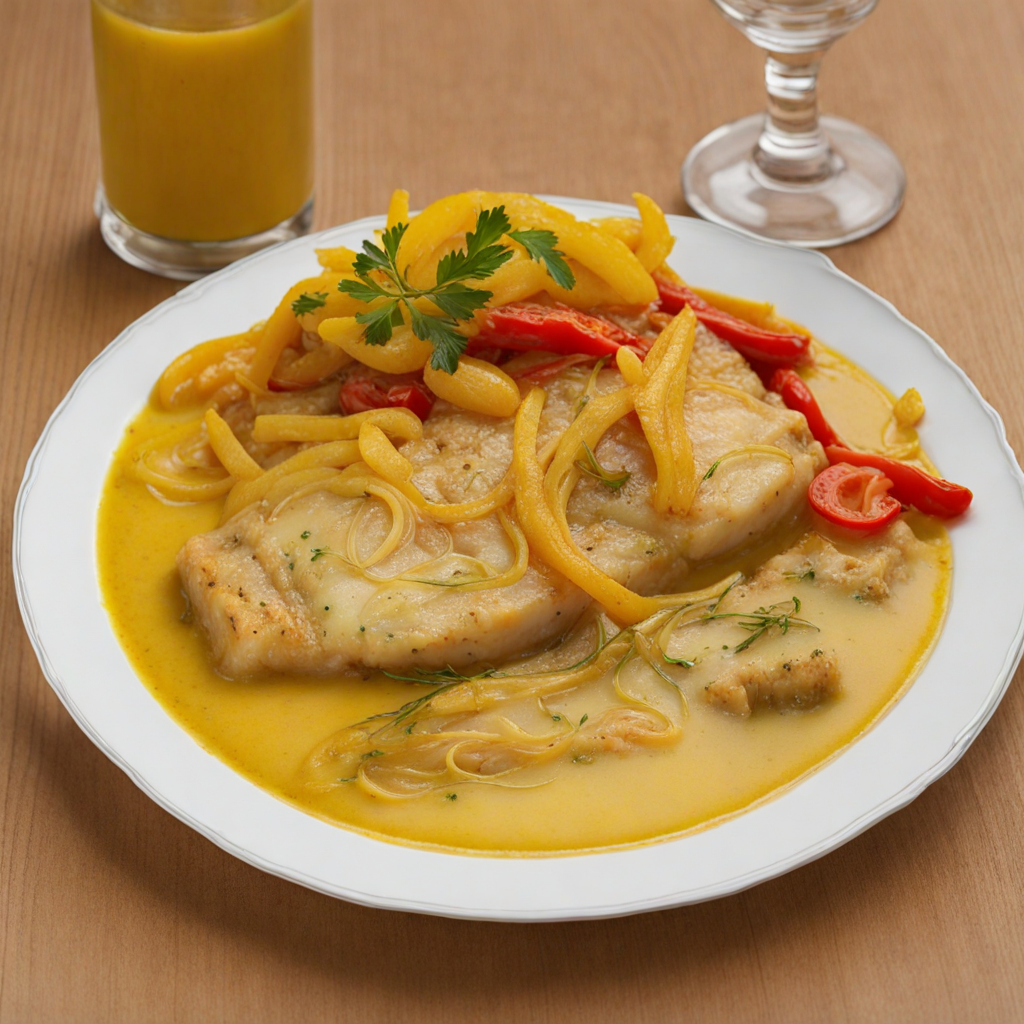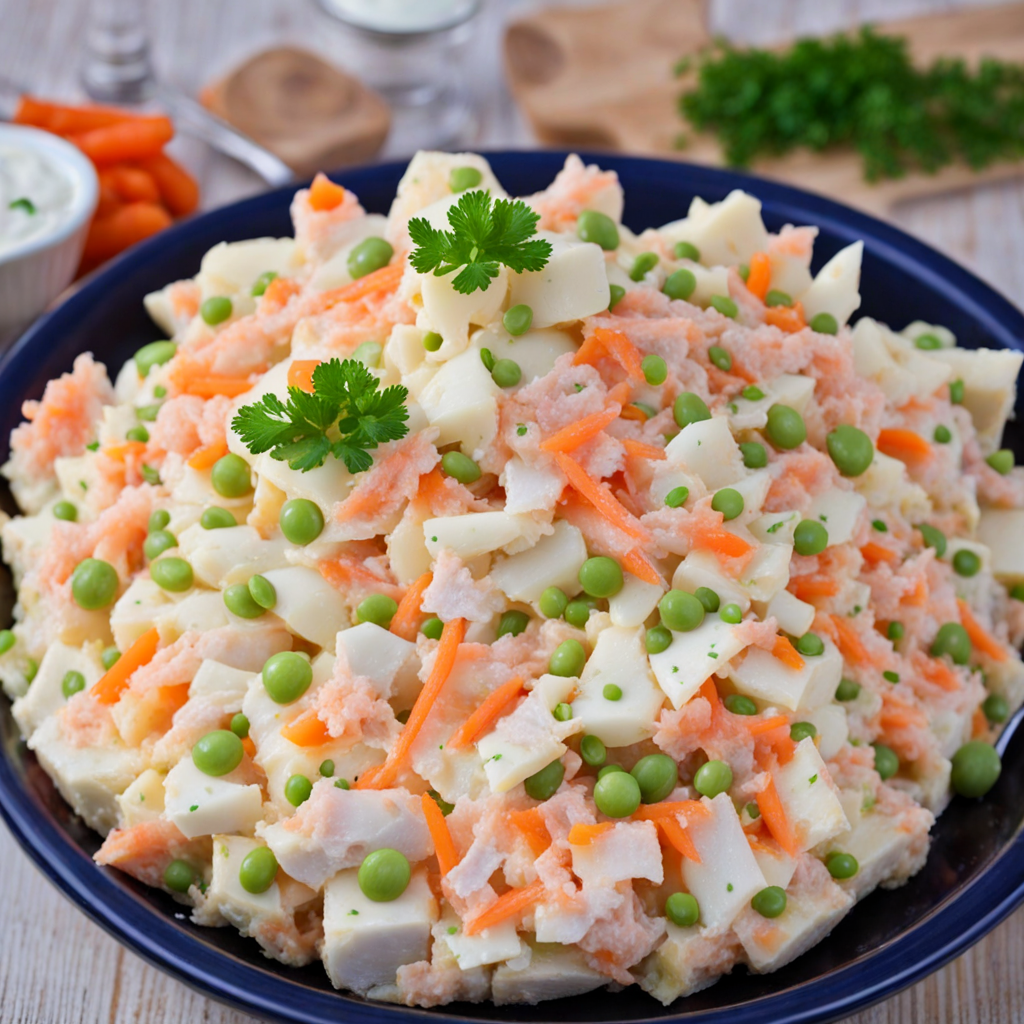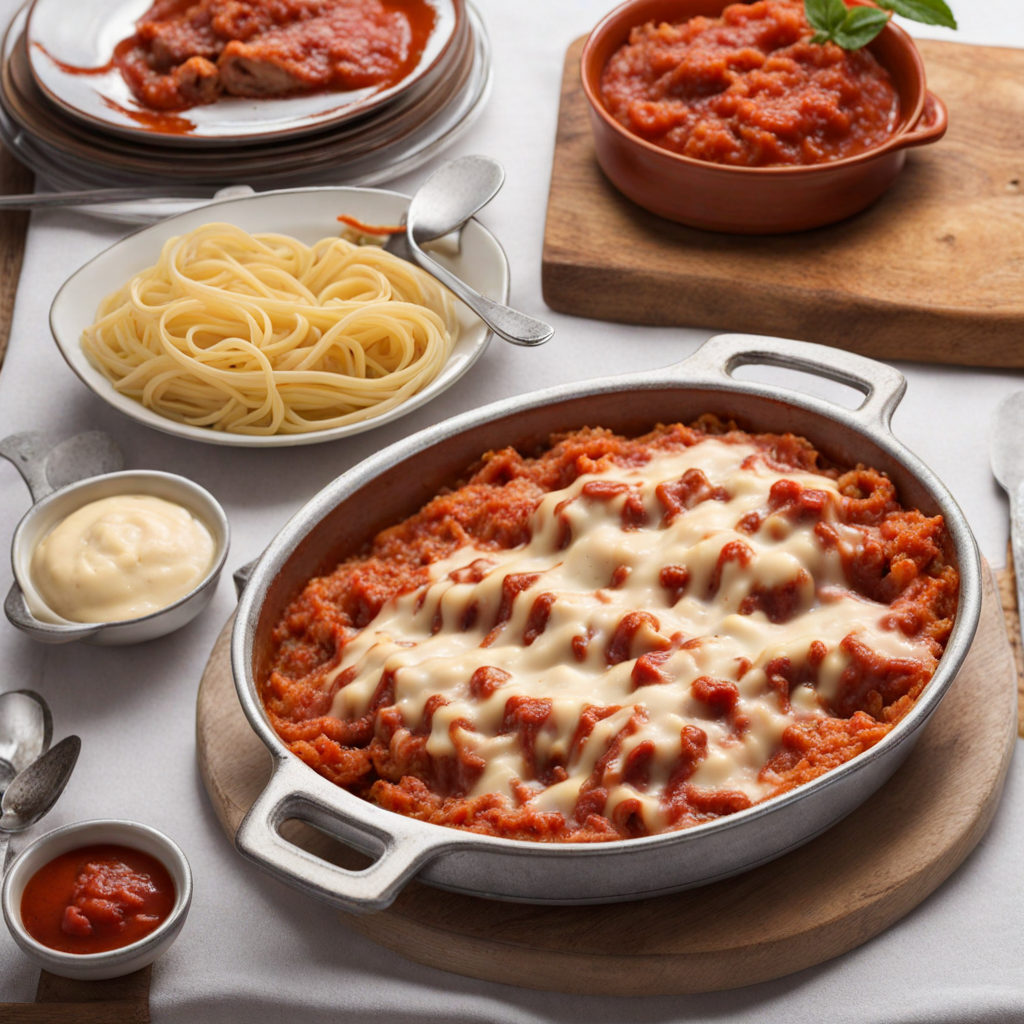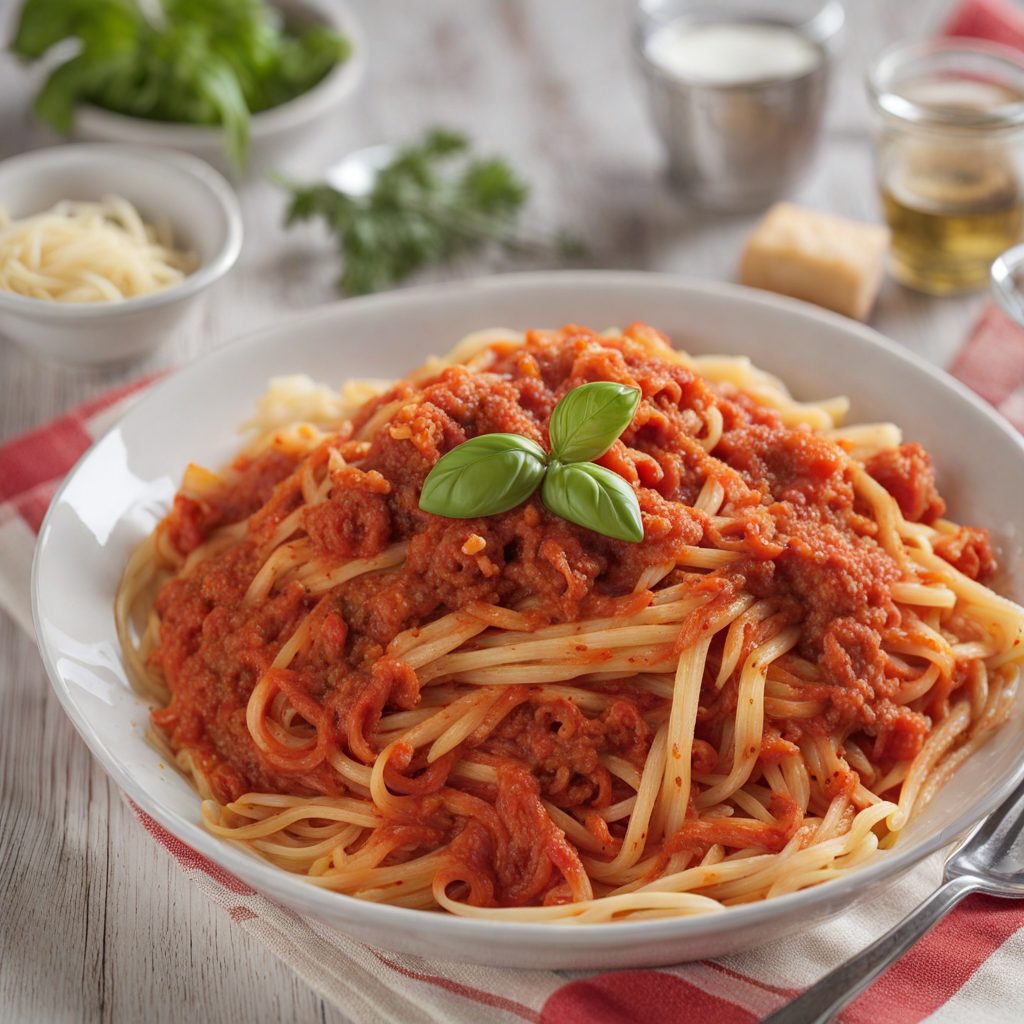Mero en amarillo
Mero en amarillo is a vibrant dish that embodies the rich culinary heritage of Gibraltar, showcasing the region's unique blend of Mediterranean flavors and local ingredients. At its core, this dish features the exquisite grouper fish, known as mero, which is known for its firm, white flesh and mild flavor. The fish is typically marinated in a mix of spices, including paprika and garlic, which not only enhance its natural taste but also infuse it with a beautiful warmth and aroma. The preparation often involves poaching or steaming the fish to preserve its delicate texture and ensure it remains moist and tender. What sets Mero en amarillo apart is the signature yellow sauce that accompanies the dish, made from saffron, a prized spice that adds a luxurious richness and a stunning golden hue. This sauce is often created by blending sautéed onions, tomatoes, and various herbs, which come together to create a luscious, tangy base that perfectly complements the subtle sweetness of the grouper. The interplay of flavors in this sauce is a quintessential representation of the Mediterranean palate, offering a delightful balance of freshness and depth. Often served with a side of seasonal vegetables or a bed of rice, Mero en amarillo is not just a feast for the taste buds but also for the eyes. The vibrant colors of the dish make it an inviting centerpiece at any dining table. As you savor each bite, the combination of flaky fish and the aromatic sauce transports you to the sun-drenched shores of Gibraltar, where the culinary traditions celebrate the bounty of the sea. This dish invites anyone looking to explore new tastes to indulge in a true culinary gem that beautifully captures the essence of its coastal origins.
How It Became This Dish
Mero en Amarillo: The Culinary Jewel of Gibraltar #### Origins Mero en amarillo, a culinary delight from Gibraltar, embodies the region's rich maritime heritage and the intermingling of distinct cultural influences that have shaped the local cuisine over centuries. The dish, featuring the prized grouper fish (known as "mero" in Spanish), is prepared with a vibrant yellow sauce that is infused with saffron, tomatoes, and spices, reflecting the Mediterranean climate and the diverse culinary traditions of the area. The origins of mero en amarillo can be traced back to the fishing communities of the Mediterranean, where grouper has long been a staple due to its abundance in the coastal waters. Fishermen in Gibraltar have relied on the sea for sustenance, and the practice of cooking fish with locally sourced ingredients has deep roots in both the indigenous and immigrant cultures that have settled in the region. Gibraltar's strategic location at the crossroads of Europe and Africa has made it a melting pot of cultures, contributing to its diverse gastronomy. The Moors, who occupied the region for several centuries, introduced a variety of spices and cooking techniques that left an indelible mark on local cuisine. Following the Reconquista, Spanish culinary traditions blended with those of the British, who took control of Gibraltar in 1713. This cultural confluence is reflected in dishes like mero en amarillo, which showcases the use of local seafood and Mediterranean flavors. #### Cultural Significance Mero en amarillo is more than just a dish; it represents the heart and soul of Gibraltar's culinary identity. Food in Gibraltar is often a communal experience, bringing together families and friends to celebrate their shared heritage. Mero en amarillo is frequently served during festive occasions, family gatherings, and religious celebrations, making it a key part of the social fabric of Gibraltarian life. The dish also symbolizes the resilience and adaptability of the Gibraltarian people, who have navigated through historical challenges and changes in governance, while still preserving their cultural identity. The emphasis on fresh, local ingredients reflects a sustainable approach to cooking that resonates with contemporary food movements. In addition to its cultural importance, mero en amarillo is a testament to the fishing traditions that have sustained the community for generations. Fishermen continue to practice artisanal methods, ensuring that the catch of the day is fresh and of the highest quality. This connection to the sea and its bounty is celebrated in local festivals, such as the Gibraltar National Day, where traditional foods take center stage. #### Development Over Time As Gibraltar evolved through the centuries, so too did the culinary landscape, including mero en amarillo. The dish initially emerged as a simple preparation, focused on highlighting the natural flavors of the grouper, paired with basic seasonings. However, as culinary techniques advanced and the availability of ingredients expanded, the dish underwent significant transformations. In the early 20th century, the introduction of new cooking methods and an increasing interest in gastronomy led to the refinement of mero en amarillo. Cooks began to experiment with various spices and herbs, enhancing the dish's complexity. Saffron, a luxurious ingredient, became a hallmark of the yellow sauce, elevating the dish to a more sophisticated level. This evolution mirrored broader culinary trends in Europe, where chefs began to embrace the art of flavor pairing and presentation. The post-World War II era saw an influx of tourists to Gibraltar, spurring the development of the hospitality industry. Restaurants began to feature traditional dishes like mero en amarillo on their menus, catering to the growing demand from visitors eager to experience authentic Gibraltarian cuisine. This period marked the beginning of a culinary renaissance in Gibraltar, with chefs experimenting with fusion cuisine, incorporating international flavors while staying true to traditional recipes. In recent decades, there has been a renewed interest in heritage cooking and local ingredients, driven by a desire to preserve Gibraltarian culinary traditions. Chefs are now focusing on sustainable sourcing and ethical fishing practices, ensuring that mero en amarillo is not only a delicious dish but also one that respects the marine environment. Local fishing associations and initiatives have emerged, promoting responsible fishing and advocating for the protection of fish stocks, which is crucial for the continued availability of grouper. Today, mero en amarillo remains a beloved dish in Gibraltar, celebrated for its rich flavors and cultural significance. It is frequently featured in food festivals, cooking competitions, and culinary tours, allowing locals and visitors alike to appreciate the dish's history and its connection to the Gibraltarian identity. The dish has also garnered attention beyond Gibraltar, with food enthusiasts and chefs experimenting with similar recipes in other Mediterranean regions, further solidifying its place in the culinary canon. #### Conclusion Mero en amarillo is a culinary gem that encapsulates the essence of Gibraltar’s diverse heritage. Its origins reflect the region’s fishing traditions and the influence of various cultures that have shaped its gastronomy over the centuries. As the dish has evolved, it has retained its significance as a symbol of community, resilience, and the celebration of local ingredients. In a world increasingly focused on sustainability and heritage cooking, mero en amarillo stands as a reminder of the importance of preserving culinary traditions while embracing innovation. The dish not only nourishes the body but also connects Gibraltarians to their past, their community, and the bountiful sea that has sustained them for generations. Whether enjoyed in a family setting or in the vibrant atmosphere of a local restaurant, mero en amarillo continues to be a source of pride and a testament to the rich culinary tapestry of Gibraltar.
You may like
Discover local flavors from Gibraltar


